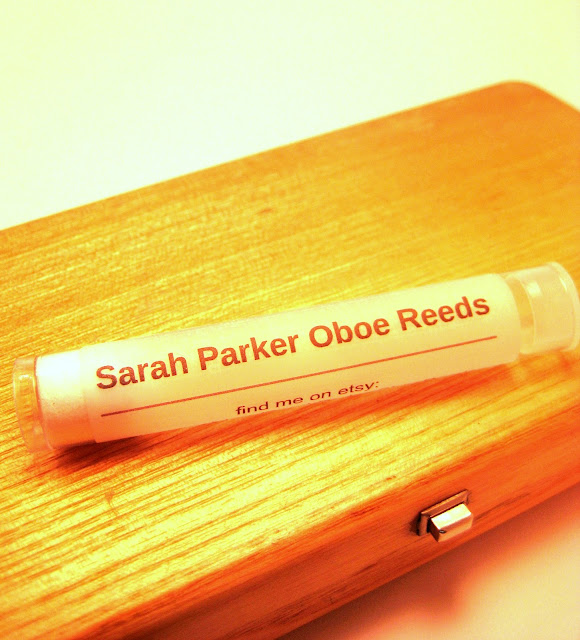Last year I told you about a book that revolutionized the way I teach music, The Practice Revolution by Philip Johnston. The main tool in this book that's changed how I practice music is an idea called The Level System. I learned a piece using this method two years ago, and I can pick it up today and it will be as fresh as if I had worked on it last week. Ever since then, I've had my students learn all their music and All-State scales this way. Basically, the idea is that you section your music off into small phrases, if it's not too technically challenging, or into individual measures if there is a lot to work on technique-wise. Each section is given a number and the sectioned music looks like this:
This piece is not challenging technically, so it's been sectioned into small phrases. Once we have our sections, we can start putting them through the levels. The levels are a series of steps that have to be mastered one after the other before we can move on. They start out fairly easy: rhythm, then notes, then articulations, and finally upping the tempo.
The Metronome
The metronome is used the whole time, except for the second level, which is all about notes. Without the metronome, we have no standard to judge ourselves by, and it's really easy for rhythm mistakes to creep in. To figure out our metronome markings, all we have to do is figure out our final tempo and work backwards. So, if our level 6 tempo is q = 120, level 5 would be q = 116, level 4 would be q = 112, level 3 would be q = 108 and level 1 would be q = 104. Here's a blank level system for you to use (the link takes you to a Google doc):
 |
| Blank Level System |
As you work through the levels, all you have to do is write the number of the level completed in the blank space next to the section numbers. To consider a level completed, you need to be able to play it correctly three times in a row. With my students, when they get through level 6 with a section, we mark it with a small sticker, and when they've done all the sections we put a big sticker at the top along with the date completed. The stickers are really important because they give you a visual reference of how much you've gotten done.
The Lesson Notebook
One of my favorite things about using the level system is that it's really easy for me to notate what I want the student to do for the week in their lesson notebook. A typical notebook entry would look like:
Bach, Gavotte - Trio
- S.1 - L. 6
- S.5 - L. 6
- S.9 - L. 6
- S.11 - L. 4
- S. 13 - L. 3
S stands for section and L stands for level. Because the levels are already defined for the student, it's very clear what needs to be accomplished for the next lesson. We typically try to have 3 sections completed for every lesson and one or two in the hopper for the next week.
When I practice, my natural tendency is to practice the first phrase to death and neglect the rest of the piece. The level system ensures that each section of the piece is practiced with the same attention to detail, and once all of the sections are completed, they're all technically in the same place. The harder parts aren't slower than the easy parts, and it's really easy to put everything back together and start working on phrasing. If you're questioning how to practice music, or if you're looking for a better way to practice, I highly recommend trying the level system!

















